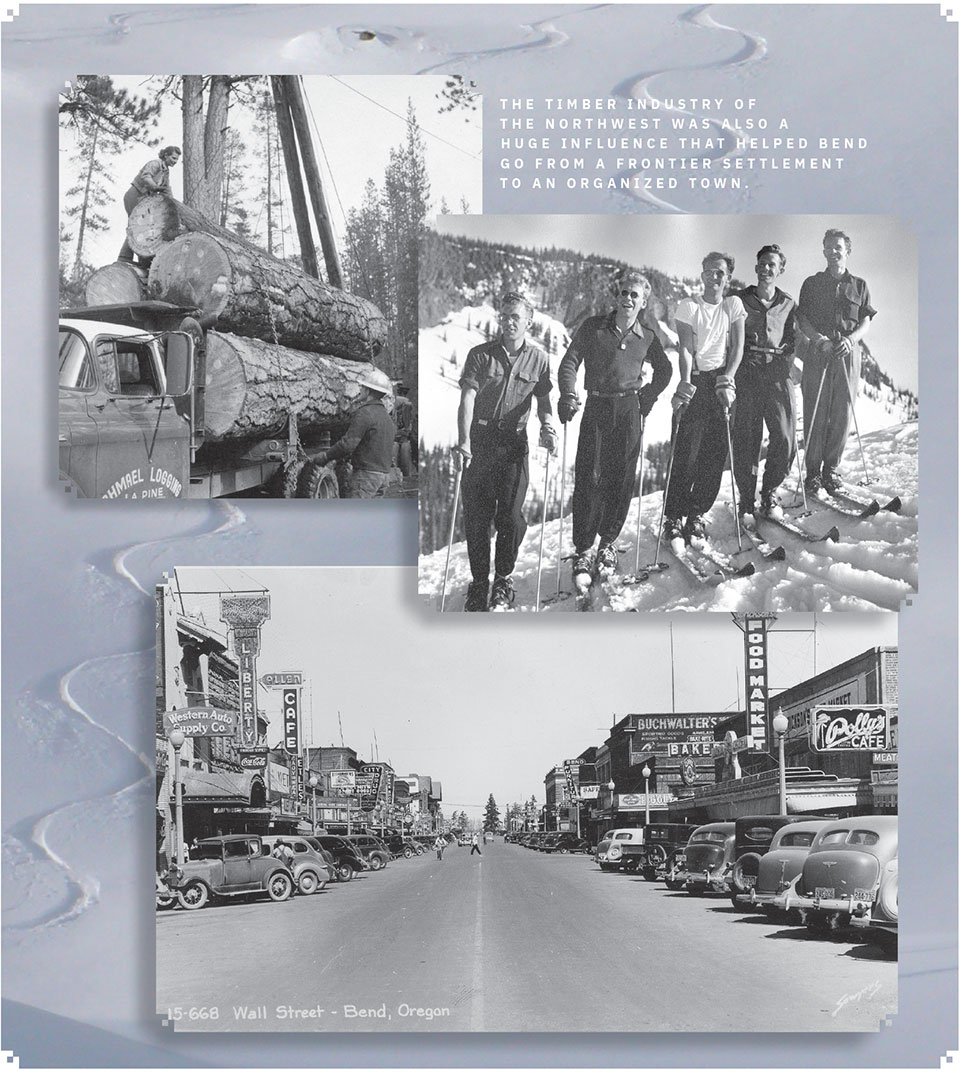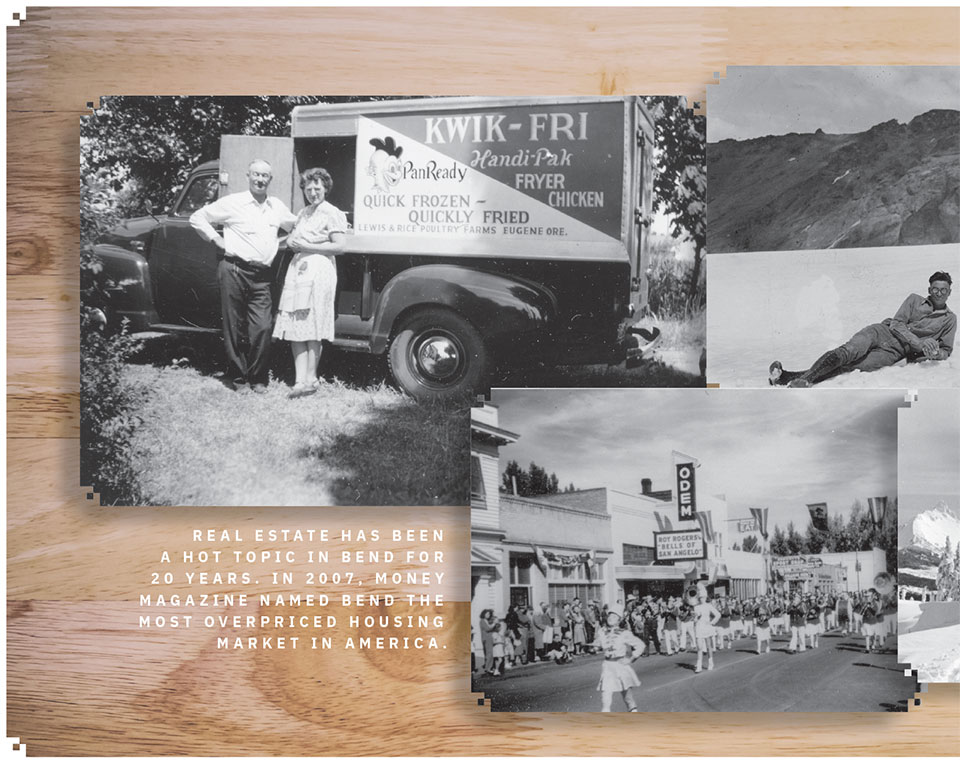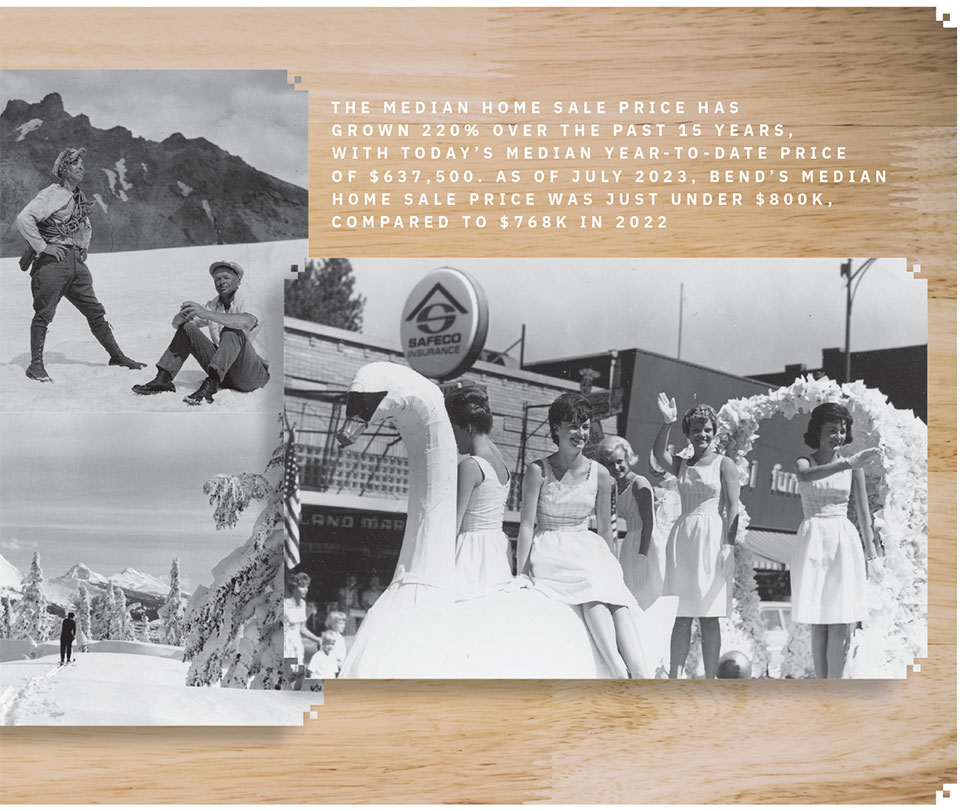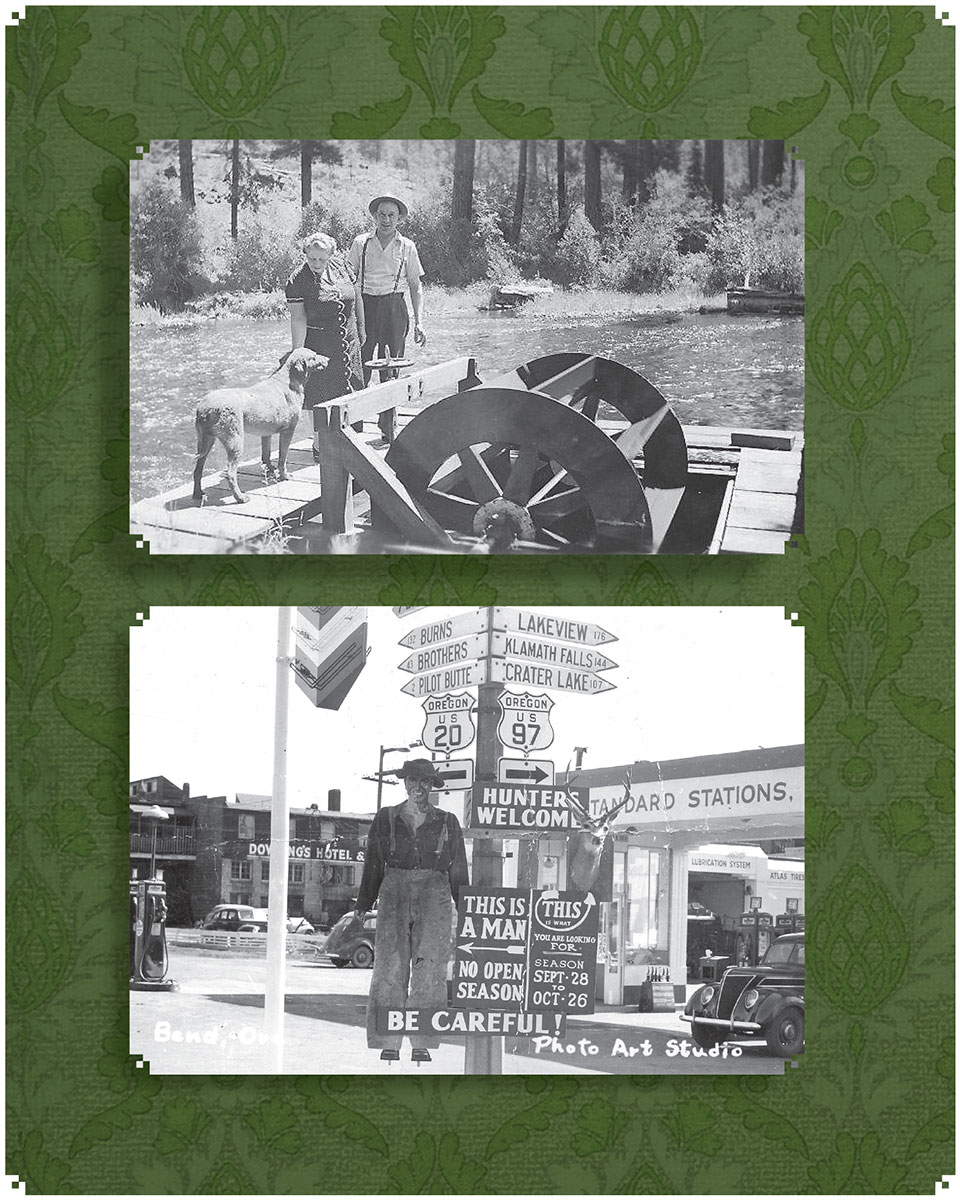THE VALUE OF LAND
written by Cassidy mantor
photos courtesy Deschutes county Historical Society
Although Bend’s pristine rivers and lush forests are an obvious environmental draw for outdoor lovers, Beaver hunting is what originally put Bend on the map. The earliest records revealed that in 1834, members of the Nathaniel Wyeth party followed a beaver trail from their camp on the Columbia River. Their trail was erased, but historians were able to reconstruct it to see how the first white explorers discovered Bend.
The next wave of explorers was led by John C. Fremont. His group famously hauled a cannon with them while following a trail over Tumalo Creek. South of Bend, they encountered the Klamath Marsh area and named Summer Lake. Gold was found in 1862 in John Day Valley, and historians are confident that prospectors traversed Bend to get to the site, but they left no evidence of their travels.
In the 1870s, pioneers who became ranchers claimed land in the grasslands of the upper Deschutes. The Dalles land records revealed that Tom Greer was an early claimant. Several years later, John Y. Todd purchased land from Greer and named his ranch “Farewell Bend,” giving rise to the town’s future name. Like the story of Manhattan, which was purchased by the Dutch from the Native Americans for the equivalent of $24 in the 1600s, Todd bought what would become the town of Bend for $60 and two saddle horses. The ranch was near what is considered today the Old Mill District on the east side of the Deschutes River. There were no plans to form a town at the time.
Twenty years later, in 1900, pioneer Alexander M. Drake came to Bend from the Midwest with the goal of capitalizing on irrigation opportunities in the upper Deschutes. He formed the Pilot Butte Development Company, and Bend started to become a more organized settlement. Beginning with a lodge, more buildings were built and more people came for jobs. In 1904, the people voted to incorporate Bend. The following January, the town council had its first meeting led by Bend’s first mayor, A. H. Goodwillie.
Naming Bend proved to be controversial. Before it was incorporated, competition between settlers led to several other names being considered. Staats (after William H. Staats, another early settler’s name), Deschutes (Staats’ preferred name), and Pilot Butte all were in the running along with Farewell Bend. Ultimately, the Post Office in Washington, D.C., shortened it to “Bend” and the rest is history.
Bend has always thrived independently of the greater economic situation. In 1929, amid the stock market crash, Bend changed its government to a city commission from a council. Three commissioners were hired, along with a new mayor and city manager. The city operated under the same charter until 1995 when it was redrafted to add seven commissioners and change their title as elected representatives from commissioner to councilor.

TIMBER AND THE OLD MILL DISTRICT
The timber industry of the Northwest was also a huge influence that helped Bend go from a frontier settlement to an organized town. In 1911, the Great Northern Railway constructed a line going into Bend. Four years later, Great Lakes company Brooks-Scanlon Lumber bought Oregon Timber and began operating sawmills in Bend the following year. Shevlin-Hixon, another company from Minnesota, operated a mill across the Deschutes River. The two logging companies set a high pace for ponderosa pine production for the Northwest.
Brooks-Scanlon continued to acquire sawmills in Bend, and in 1958, Bachelor Butte was developed into Mt. Bachelor. The resort village would be built 20 years later. In 1970, Black Butte Ranch began development by Brooks Resources – a former subsidiary of the original lumber company.
During that same time, prominent Bend citizen Bill (Billy) Smith graduated Stanford with an MBA and began working for Brooks Resources in their marketing department. An advocate of making Bend a place people could live instead of moving away from the old logging town when they grew up, Smith eventually would become the president of Brooks Resources and be responsible for many of Bend’s planned communities. Smith helped Bend transition from its sole reliance on timber and wood to an economy that embraced recreation and tourism. Some of Smith’s key projects included breaking ground on Awbrey Butte in 1984 and Awbrey Glen in 1993. That same year, Smith and several other investors purchased 270 acres of abandoned mill property that would eventually become the Old Mill District and Hayden Homes Amphitheater.
THE FIRST WAVE OF TOURIST-TRANSPLANTS
Bend’s population grew over 150% from 1990 to 2000, according to the US Census. Fueled by tourism initially, outdoor-loving people decided to make it home. The population
doubled again between 2000 and the most recent Census Survey in 2020, and that was before COVID when Bend turned into one of the fastest-growing Zoom towns in the country, with many transplants coming from Seattle and San Francisco who could suddenly work remotely. Retirees also drove Bend’s population growth with Central Oregon’s weather being more favorable than the Pacific Northwest and the Bay Area. Bend’s transient room tax – a levy designed to convert visitors into residents – brought $7M to the town in 2021.
Beyond skiing at Mt. Bachelor and boating and hiking at Cascade Lakes, biking, climbing, rafting, golfing, camping, and fishing captured the hearts of people seeking a
deeper connection with the environment and a beautiful landscape. As beer traditionally paired nicely with apres-ski and river activities, Bend’s Deschutes Brewery became the eighth-largest craft brewery in the country.
While outdoor recreation is often the first thing that comes to mind with Bend, arts and film make up a substantial part of the town’s culture as well. In 2019, Bend became the location of the last Blockbuster Video store, a fitting claim for a town with a cult following of its own. Two museums, numerous galleries, venues, restaurants, and shopping bring world-class music, film, and art to town. The Bend Film Festival, an Academy-recognized independent film festival, is celebrating its 20th year this year.

Real estate has been a hot topic in Bend for 20 years. In 2007, Money magazine named Bend the most overpriced housing market in America. Bend was hit hard by the recession in 2008, and house prices dropped 23% in Q1 of 2010 over Q1 of 2009 – the largest decline in the country. But like the land that gets hit by wildfire and regenerates, so did Bend’s real estate market. Today, the majority of people moving to Bend hail from Portland, Seattle, San Francisco, and Los Angeles, as well as from points east including Washington, D.C., and Nashville and demand is as high as ever.
Two years after the pandemic, Bend is in another state of flux. Bend’s Community Perceptions Survey asked residents to rate the quality of life in town, and in 2023, 70% of residents considered life good or excellent in Bend – down from 88% in 2021. Affordable housing was a main factor in the lower levels of satisfaction, as was homelessness. In 2021, 8% of respondents to the survey noted homelessness, while this year 36% found it to negatively impact life in Bend. Cost of living, traffic, and too much development were also concerns expressed in the survey. The sentiment was clear: people from Bend do not want to see their gem of a town exploited by unsustainable growth and are seeking solutions that will reduce the burdens of expansion.

In their most recent report, the Chamber of Commerce prioritized affordable housing and childcare to support local business owners and their workforces. Through their Workforce Housing Initiative, the Chamber published an Accessory Dwelling Unit (ADU) guide that helped define actionable steps to create more affordable housing options in Bend and Deschutes County. Developers, bankers, and housing advocates met with a workforce housing consultant to define more solutions for rental and ownership, and a legislative calendar was created to amplify significant change in Bend’s housing market.
Beyond Bend’s city limits, Central Oregon is one of the hottest real estate markets in the West. Communities continue to be developed that are suitable for families as well as retirees looking for legacy homes – from Brasada Ranch that has made Conde Nast Traveler’s Best Resorts in the World list as well as Travel and Leisure’s Top Resort Hotels in the West rankings, to Awbrey Butte; Southern Crossing to the Old Mill District.
Statistically speaking, the median home sale price has grown 220% over the past 15 years, with today’s median year-to-date price of $637,500. As of July 2023, Bend’s median home sale price was just under $800K, compared to $768K in 2022. Despite another impending recession, the market continues to be hot and the population continues to grow as more people discover why Bend is a unique high-desert destination offering the rare small-town combo of internationally recognized cultural events and world-class recreation. Billy Smith believed that the magic of Bend was that people were friendly and took the time to smile at each other. As VisitBend.com puts it, “Some people think that childlike wonder is something you grow out of. Those people have never been to Bend.”
